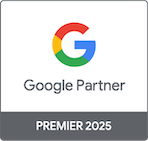According to ANA studies in Forbes, industry data indicate 15% of ad budget is allocated to MFA sites.
15% of ad spend is wasted on bad ad placements: Here is how to fix it with ClickPatrol
Abisola Tanzako | Oct 30, 2025

Table of Contents
- What are bad ad placements in programmatic advertising?
- How much ad spend is wasted on bad ad placements?
- Global Ad waste: A $72 billion black hole
- The MFA menace: 15% of spend, 21% of impression
- Programmatic traps: 23% Down the tubes
- Top reasons ads end up in bad placements
- Lack of transparency in programmatic ads:
- Fraud and invalid traffic:
- Brand safety blind spots:
- Lack of optimization:
- ClickPatrol: How to eliminate bad ad placements and boost ROI
- Intelligent placement exclusion:
- Real-time monitoring:
- Easy integration:
- Brand safety and compliance:
- Case studies: Wins against bad ad placements
- Case study 1: How Avis reclaimed lost ad spend and 123% more conversions
- Case study 2: How Conservio eliminated 15% of ad spend on bad placements
- Best practices to prevent bad ad placements in 2025
- Reclaim your Ad spend, elevate your brand
Bad ad placements silently drain ad budgets. A Forbes study shows that 15% of ad spend, about $10 billion annually, is wasted on low-quality, made-for-advertising (MFA) websites.
These placements are designed to attract clicks, not genuine audiences, which hurts return on ad spend (ROAS) and erodes brand credibility.
The problem is global. Many campaigns start with high expectations but often end up burning budgets on gaming apps and clickbait sites, yielding no real conversions.
This article explains how bad ad placements drain your budget, what the data reveals, and how ClickPatrol helps advertisers reclaim wasted spend.
What are bad ad placements in programmatic advertising?
Bad ad placements occur when ads appear on websites or apps that are not aligned with your audience, brand, or goals, such as a family-friendly ad on an adult or clickbait site.
In programmatic advertising, this is common because about 80% of display ads are purchased through automated auctions, often landing on low-quality sites created to attract clicks rather than real engagement.
Studies show 21% of ad impressions come from such sites. These placements can harm your brand, lower visibility, and signal poor relevance to search engines, making careful optimization essential.
How much ad spend is wasted on bad ad placements?
Here are some key numbers that show their impact on campaigns.
Global Ad waste: A $72 billion black hole
Invalid traffic (IVT) is costing advertisers billions of dollars. In 2022, bots, fraud, and bad placements, where ads load but never reach real people, cost $54.63 billion.
By 2024, losses grew to over $72 billion due to programmatic buying and low-quality inventory.
Bad ad placements often hide behind fake impressions on low-quality websites, in under-the-fold spots, on mobile apps, or on pop-up blogs with minimal engagement.
With global ad spending expected to hit $740 billion by 2025, even a 10% waste could cost tens of billions and directly reduce ROAS.
The MFA menace: 15% of spend, 21% of impression
MFA websites, created mainly to generate ad revenue, are a major drain on budgets.
According to Forbes, an ANA report found that 15% of ad spend, around $10 billion yearly, goes to these low-quality domains, which also account for 21% of impressions.
Additionally, most are AI-driven clickbait sites, rather than credible blogs. Ads often go unseen: a 2015 Forbes report showed 56% of digital ads were not viewed due to poor placement, such as interstitials on irrelevant pages.
In 2023, Analytics reported that 80% of Google video ads appeared on low-quality sites with little monitoring. Automation without oversight fuels this waste.
Programmatic traps: 23% Down the tubes
An ANA study covered by Ad Age revealed that 23% of programmatic ad spend is wasted on ineffective sites.
The main reason is information gaps in the supply chain. Start by setting exclusions and cleaning up your placements.
This simple step can help recover 15–23% of your ad spend, improve ROI, and enhance SEO signals by delivering higher-quality traffic.
Top reasons ads end up in bad placements
Bad ad placements result from the structure of digital advertising and the management of campaigns. Here are the main culprits:
Lack of transparency in programmatic ads:
With real-time bidding (RTB), ads appear on millions of sites in seconds. Limited control and visibility often push ads to low-quality or irrelevant sites.
Fraud and invalid traffic:
Some spam websites use bots that pretend to be real users, driving fake clicks and impressions, wasting ad spend, and giving a false picture of performance.
Brand safety blind spots:
Even trusted websites can become risky. For example, an ad may appear next to fake news or controversial content, which can damage a brand’s image and erode trust.
Lack of optimization:
Many campaigns run on autopilot without checks, placing ads on mobile apps or platforms that add no real value and waste budget.
ClickPatrol: How to eliminate bad ad placements and boost ROI
At ClickPatrol, we tackle ad waste by making sure your ads only appear where they truly matter. Here’s how we do it:
Intelligent placement exclusion:
ClickPatrol automatically checks and blocks low-quality websites, spammy apps, and irrelevant pages, like gaming sites, for a B2B campaign.
It integrates with Google Ads, DV360, and The Trade Desk, giving you greater control over where your ads appear.
By focusing on trusted and high-performing sites, advertisers see better returns and stronger campaign results.
Real-time monitoring:
Users are immediately alerted when ads show up on low-quality sites or networks. This quick feedback helps advertisers take immediate action, cut out waste, and reinvest their budget where it performs best.
Easy integration:
ClickPatrol is simple to set up. You can link your ad accounts, set clear rules, and control placements in minutes. What was once wasted ad spend can now be turned into profit.
Brand safety and compliance:
ClickPatrol works with trusted data providers to help advertisers avoid risky or harmful content, protecting your brand’s reputation and ensuring compliance with advertising standards.
Case studies: Wins against bad ad placements
Case study 1: How Avis reclaimed lost ad spend and 123% more conversions
Avis, a major international car rental company, was losing a significant portion of its ad budget in its South African campaigns due to poor-quality placements and invalid clicks.
Despite using negative keywords and manual filtering, bot traffic and irrelevant clicks continued to impact key performance metrics, increasing the CPA and reducing both CTR and conversions.
To address this, Avis integrated ClickPatrol into its campaign management process. The platform provided real-time visibility into traffic sources and automatically excluded placements that didn’t meet quality standards.
This reduced exposure to low-value clicks and ensured their ads reached relevant audiences. Results within three months:
- Conversions increased by 123%
- CTR improved by 91%
- CPA decreased by 36%
According to Avis’s paid media consultant, using ClickPatrol has become part of their daily routine: “It helps us reduce wasted spend and focus our budget on real users who are likely to convert.”
Case study 2: How Conservio eliminated 15% of ad spend on bad placements
Conservio, a travel company with a sustainability focus, was experiencing unusually high ad costs and low conversions.
Their team suspected that competitors and bots were generating fake clicks, accounting for approximately 15% of their budget. After testing several tools without success, Conservio tried ClickPatrol’s two-week free trial.
The platform detected that 14% of their traffic was non-human, confirming their suspicion. With automated placement blocking, Conservio eliminated invalid traffic and focused its budget on genuine prospects.
Results after one month: 17% of ad costs saved and noticeable improvement in lead quality and conversion rates. CEO Justin Rijnsberg said, “ClickPatrol gave us the visibility we were missing. Within weeks, we saw cleaner traffic and better ROI.”
Best practices to prevent bad ad placements in 2025
ClickPatrol handles most of the heavy work. Still, it is important to stay proactive. These simple steps can help:
Audit regularly
Check your Google Ads placement report often. Find sites that waste your budget. Keep non-brand sites below 10% of your total spend.
Layer exclusions
Start wide. For example, remove mobile apps when your campaign is focused on desktop. Then narrow your exclusions using real data.
Prioritize viewability
Focus on placements with more than 70% viewable impressions, reducing waste from unseen Ads.
Use trusted tools
Combine ClickPatrol with safety tools like Integral Ad Science to enhance your control and brand safety.
Test and improve
Run A/B tests on placements every quarter. Link your results to SEO goals such as referral traffic and engagement.
Reclaim your Ad spend, elevate your brand
Bad ad placements are not a fixed reality. They are a choice marketers can control. A significant portion of advertising budgets still goes to low-quality sites and fake traffic.
Billions of dollars are wasted every year, draining campaigns and weakening brand impact. Marketers have the power to act. More substantial ROI follows, supported by cleaner traffic and higher engagement.
Taking proactive steps today sets a strong foundation for future campaigns. Better placements foster trust, enhance visibility, and boost conversions.
A protected budget is not only a financial win but also a competitive edge. Book a free demo with ClickPatrol and start reclaiming your wasted ad budget within days.
Frequently Asked Questions
-
What is the percentage of wasted ad spend on bad placements?
-
What is wasted on invalid traffic, including bad placements?
Statista estimated invalid traffic, which includes bad ad placements, to be $54.63 billion in 2022 and more than $72 billion in 2024.
-
How does ClickPatrol assist in bad ad placements?
ClickPatrol automatically filters out low-quality and irrelevant websites, ensuring that ads appear on reputable sites to yield a higher ROAS.






